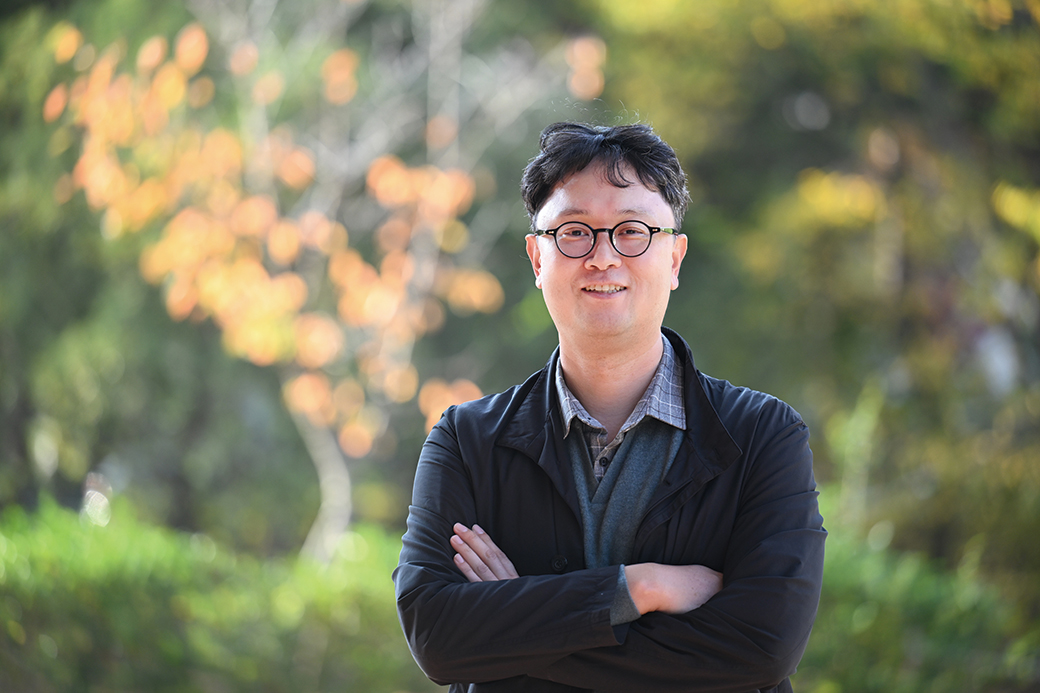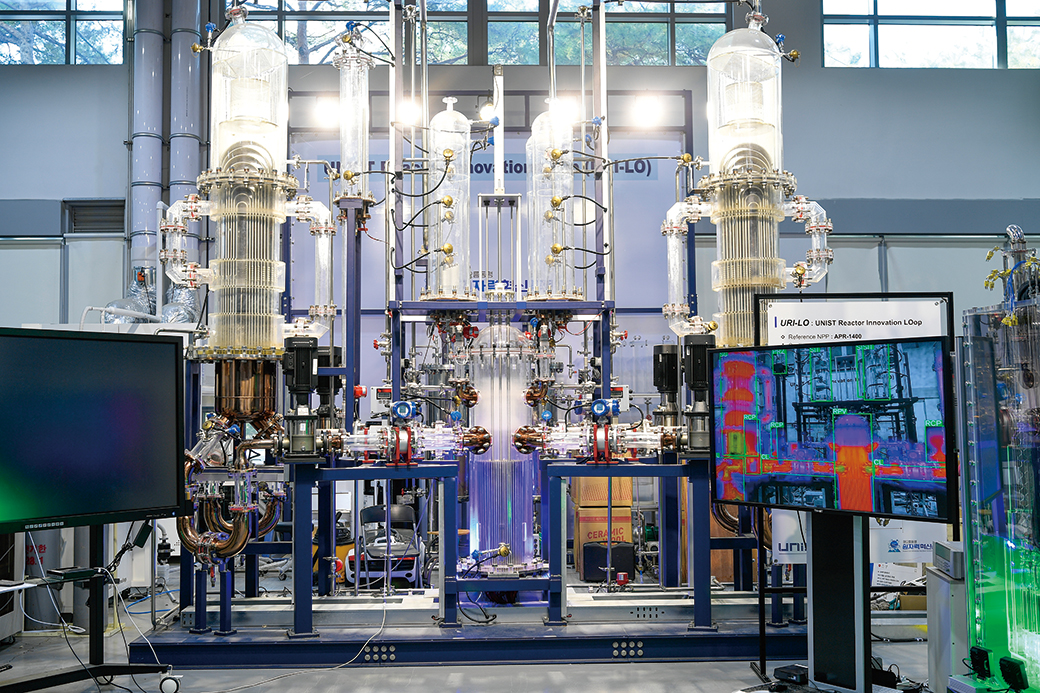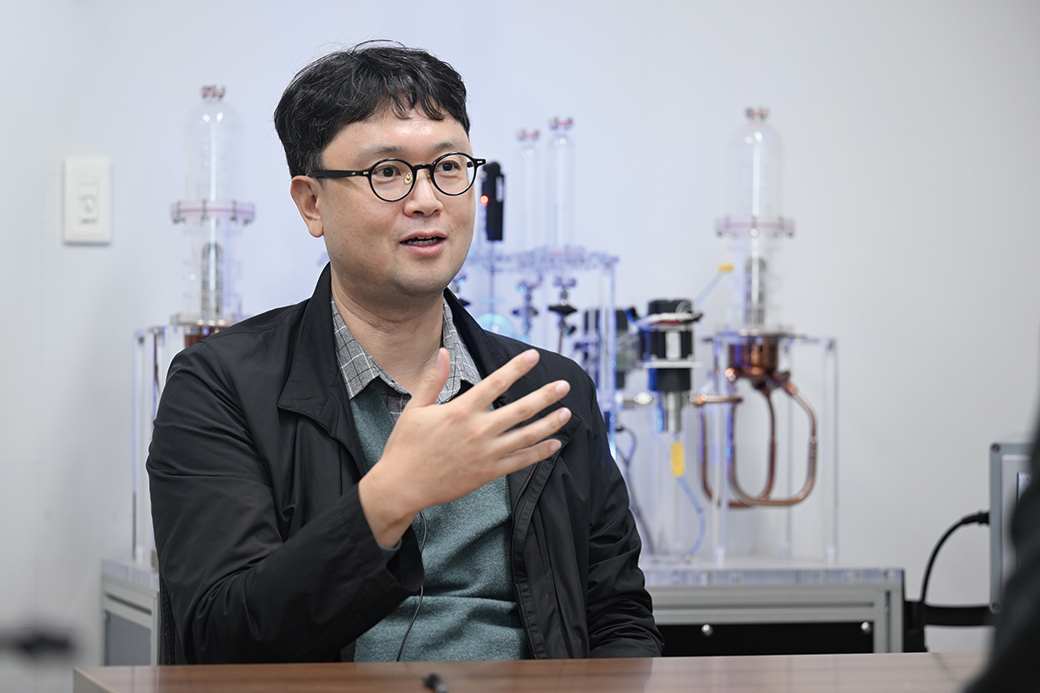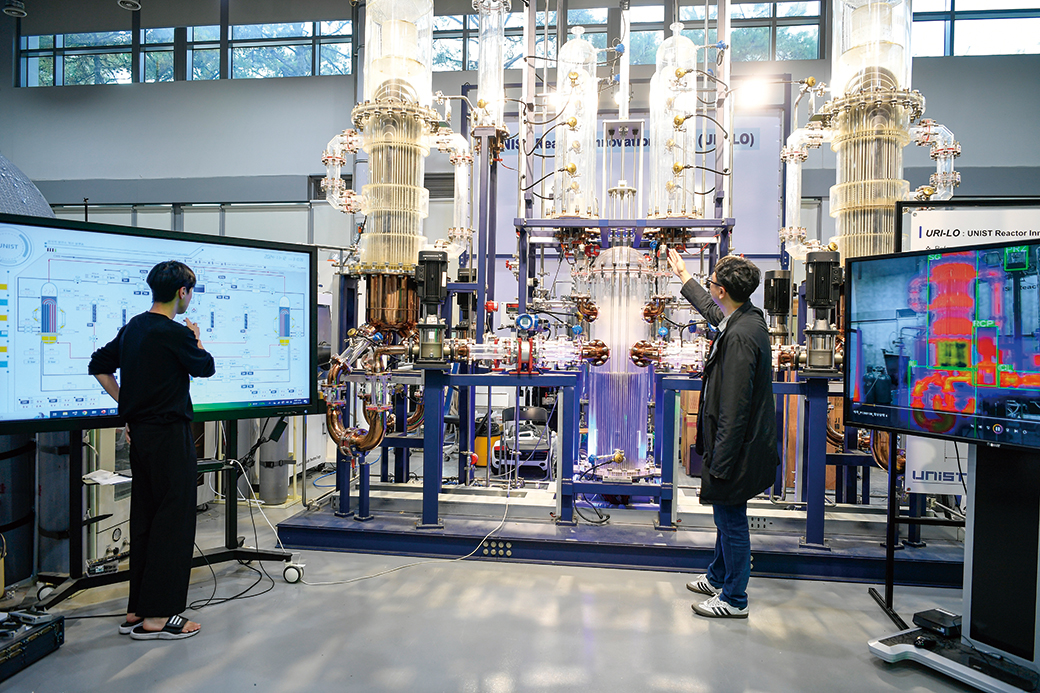
- People ②
- The Meeting of Nuclear Power and AI,
the Future of Sustainable Energy
본문영역
Professor In Cheol Bang’s Story on Nuclear Energy
The Meeting of Nuclear Power and AI,
the Future of Sustainable Energy
The Conference of the Parties to the United Nations Framework Convention
on Climate Change (COP29) at its29th meeting held in Baku, Azerbaijan in November 2024
announced that it would “triple global nuclear power generation by 2050.”
Such a policy formally declares nuclear power as an important energy source necessary
to climate change response and energy transition. It is expected to have a significant
impact on the energy policies of each country, while emphasizing the safety of nuclear
power and the improvement of energy efficiency through technological innovation.
In this atmosphere, we met Professor In Cheol Bang, who has become busy lately,
and listened to him about the present and future of nuclear technology.
- Written by _ the Editorial Office Photo _ Yoo Geun-jong

AI, Unlocking the Potential of Nuclear Power
“Nuclear power is a sustainable source of energy for mankind.”
Professor Bang’s strong belief in nuclear technology and the upcoming energy transition is implied in the above-mentioned comment, which represents his pro-nuclear stance. Professor Bang has a distinctive track record of investigating nuclear energy’s possibilities and conducting research with a sense of mission. Professor Bang’s childhood desire was to join the military.
However, he felt a sense of social obligation in the field of nuclear energy, and had a “mission” when looking for a new path after his career was hindered by eyesight problems. Like the “picture of his life,” his passion appeared to be even more evident in his lab, where he constructed a “small” nuclear power plant.
“The structure of nuclear power plants is comparable to that of the human body. When heat is produced by nuclear fission, a pump, which functions as a heart, circulates the coolant through the reactor, and delivers heat energy, just like the heart when it pumps blood throughout the body. The basic idea behind a nuclear power plant is that heat from the reactor’s interior is absorbed by the coolant, creating steam that turns a turbine to produce energy.”
Professor Bang asserts that a power plant evaluates safety by using a variety of variables, including temperature, pressure, and vibration, in the same way that an individual assesses their health by using information like body temperature, blood pressure, and touch. But now that AI and digital technology are combined, it is feasible to handle enormous volumes of data in real time, increasing the safety and effectiveness of nuclear power plants. This serves as the foundation for Professor Bang, who has a strong interest in nuclear technology research, to read the upcoming changes that will brighten his research life and mission in the age of AI transformation.

Between Fear and Hope, From Nuclear Weapons to Nuclear Reactors
Nuclear energy has long been viewed as an object of anxiety and fear. Nuclear weapons dropped on Japan during World War II and the damage caused by radiation gave people a negative perception of nuclear power. This is because people have become aware of the dangers of nuclear power attributable to the enormous destructive power of nuclear weapons, and the damage caused by radiation exposure remains a deep scar in people’s memories. Moreover, the nuclear power plant accidents in Chernobyl and Fukushima also served as an opportunity to undermine trust in “nuclear power” itself. However, Professor Bang pointed out that there are many misconceptions behind this negative image of nuclear power.
For a long time, nuclear energy has been associated with fear and worry. People’s perceptions of nuclear power were negatively impacted by the World War II nuclear bombing of Japan and the resulting radiation damage. This is because people are now aware of the hazards of nuclear power due to the tremendous devastating potential of nuclear weapons, and radiation exposure still leaves a lasting imprint on people’s minds. Furthermore, the Chernobyl and Fukushima nuclear power plant disasters provided a chance to seriously erode public confidence in “nuclear power” in general. Professor Bang, however, noted that this perception of nuclear power is based on many false assumptions.
“Nuclear power plants and nuclear weapons operate on completely different systems. Accidents that happen at nuclear power plants are usually not as severe as they used to be. Even in the event of a mishap, the damage is minimal in Western countries because the disaster is carefully confined in a sealed containment building1 to stop radiation from leaking outdoors. Residents who were evacuated from the Fukushima tragedy have now returned safely, and no one was killed by radioactive exposure.”
Professor Bang did concede, though, that there will always be a phobia of nuclear power. On the contrary, as the “nuclear discourse” grows, the lingering memory of the catastrophe among the parties involved is likely to cause mistrust regarding its safety. Professor Bang wanted to say that the nuclear industry has always attempted to find solutions to address these kinds of issues. He further underlined that nuclear power plant safety may now be enhanced while minimizing human error and accident risk because of advancements in AI technology.
“Nuclear power is currently becoming a potent answer to energy and climate change issues, despite many misunderstandings and concerns. It is evident that nuclear power, despite being viewed as a ‘necessary evil’, is a crucial part of producing energy sustainably.”
- 1.
- A concrete building with a core reactor and reactor coolant system. It can protect against shocks and prevent external leaks.


It is time to put in place regulatory and control
systems that balance the convenience and
risks of technological innovation, so that the
convergence of nuclear power and AI can
deliver sustainable benefits to both humanity
and the environment.
A future with AI, Nuclear Safety Is Enhanced by Data
Professor Bang asserts that nuclear energy is a multidisciplinary science. Realtime data collection and processing by nuclear power reactors, which are outfitted with a range of sensors and devices, improves the plant’s operational efficiency and safety. These technical solutions are also useful in producing and handling enormous volumes of big data.
“The use of data enables safety management in nuclear power plants and the prediction and preparedness of potential problems. AI technology plays an important role in analyzing and predicting data. During repetitive and dangerous tasks, even small abnormal signals that humans might miss can be detected in real time. AI will certainly be a powerful tool in complementing the role of humans and prevent mistakes.”
This approach shows that nuclear power plants and data centers are closely linked. In other words, the data collected in real time from the power plant is analyzed through AI, which optimizes operational efficiency or prevents potential accidents. In the end, AI technology is becoming an important tool in supporting the stable operation of nuclear power plants by recognizing data patterns, predicting the possibility of failures, and responding quickly. For AI to learn from a huge amount of data, it needs a huge amount of energy, and nuclear power is a model that can continuously supply such a large amount of energy. In this regard, Professor Bang described the data center as a “key place” that “processes and analyzes big data 24 hours a day, 365 days a year, and trains AI models.”
“In other words, the data center is a place where AI learns. It’s a place for learning, like a library or a reading room. Here, AI analyzes and understands all the data in the world ‘as if a student were studying for exams,’ and develops its intelligence more and more. AI that has become ‘smart’ through learning is then introduced to places like power plants, and is used in actual operations.”
Professor Bang deeply welcomed the virtuous cycle created by making nuclear power plants safer due to AI, and the safely produced nuclear energy in turn supplying electricity to data centers that make AI smarter.

The Importance of “Balancing” Technological Innovation and Social Responsibility
Nuclear power is a clean energy source with almost no carbon emissions. Thus, it is emerging as a key energy source to achieve a sustainable society and is ushering new possibilities in various fields, such as data centers, autonomous driving reactors, intelligent robots, and automation systems through convergence with AI. First, the convergence of nuclear energy and AI helps ensure that the enormous amount of energy needed for the process of collecting, analyzing, and learning data is supplied stably and efficiently.
Furthermore, the convergence of nuclear power and AI will enable realtime data analysis and early detection of anomalies to operate autonomous reactors more safely and economically. By supporting multiple intelligent robotic systems, it solves the labor shortage problem, and lays the foundation for replacing the role of humans in various industries and service sectors.
However, Professor Bang points out that the technological innovation brought about by the convergence of nuclear power and AI poses ethical challenges.
He also emphasizes that social consensus and responsible use are essential in ensuring safety and preventing technology abuse.
“It’s about holding AI accountable if an accident occurs in a system that operates autonomously. It’s a question of whom is to blame for the mistakes AI makes. Is it humanity, the developers, or the head of the operating organization? There is an urgent need for a social consensus and legal standards for this. Nuclear power is also a very sensitive topic, so if we want to use AI, first, we must prove that it is 100% reliable and safe.”
This was deemed “a challenge that is not easy at the current level of technology” by Professor Bang. This is because, while the combination of AI and nuclear power may offer a solution to the population decline issue, it also carries the risk of negative societal repercussions, including job losses and heightened inequality. Furthermore, there are still worries that human judgment and skill will be severely compromised if AI is in control of all decision-making and execution. The combination of AI with nuclear energy must be supported by social discussions and responsible technological development for moral application if it is to be a potent instrument in improving the sustainability of the future society.
In response, Professor Bang emphasizes, saying, “There should be an ongoing discussion to maintain a balance between human-centered ethics and reliance on AI. It is time to put in place regulatory and control systems that balance the convenience and risks of technological innovation, so that the convergence of nuclear power and AI can deliver sustainable benefits to both humanity and the environment.”

